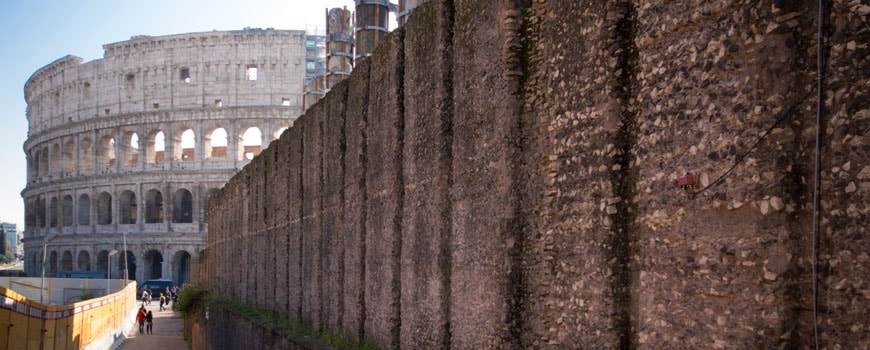Rome | 4 contemporary “Transformers” at MAXXI
MAXXI Museo Nazionale delle Arti del XXI secolo - Rome
All photographs © Inexhibit, 2015
The main entrance of the MAXXI museum by Zaha Hadid Architects, photo © Inexhibit, 2015
Four contemporary “Transformers” at the MAXXI Museum Rome
by Federica Lusiardi, Inexhibit
A moving golden flower welcomes visitors in the MAXXI museum‘s courtyard. This giant “breathing” flower, made with the emergency thermal blankets used every day during rescue operations in the Mediterranean, is the installation Golden Lotus by Choi Jeong-Hwa, whose work, together with those by Didier Fiuza Faustino, Martino Gamper, and Pedro Reyes, is on view at the exhibition Transformers, open until March 28, 2016.
The title of the exhibition, curated by Hou Hanru and Anne Palopoli, is a reference to the Japanese toy robots able to transform into different figures, an ironic allusion to the main theme: the ever-fainter distinction between art, design, and architecture in the context of a society in relentless political, social and technological transformation.
Choi Jeong-Hwa, Golden Lotus, photos © Inexhibit, 2015
Transformation is also the key world of the vision of the four invited artists, who are themselves examples of intersections between different disciplines. Indeed, Choi Jeong-Hwa is both an artist and a designer; Didier Fiuza Faustino – who trained as an architect – with his “Bureau des Mésarchitectures” works on multidisciplinary projects involving theatrical performances, installations, and video-making; Martino Gamper – a sculptor and designer – creates artifacts, furniture and interior designs; Pedro Reyes, architect, is committed to innovative communication projects focused on social and political issues.
A common trait of the artworks on display is that they all transmit today’s reality into diverse and unorthodox forms.
Choi Jeong-Hwa assembles ordinary and trifling objects to create installations that transfigure the surrounding space, like Hubble Bubble, a forest made with hundreds of green plastic baskets, or Life Life which – installed in a gallery overlooking the MAXXI’s courtyard – invites the visitors to interact with 3000 balloons which explode, deform and deflate at their passage.
Choi Jeong-Hwa, Hubble Bubble, installation views, photos © Inexhibit, 2015
Choi Jeong-Hwa, Life Life, installation views, photos © Inexhibit, 2015
Post forma is a collection of “metamorphic” chairs by the South-Tirolean designer Martino Gamper, whose research between craft, design, and art has always been focused on the process of production and transformation applied to everyday objects. By assembling and re-configuring artifacts that had already lived a previous life, Gamper emphasizes the process of re-inventing things, as well as the empathetic relationship between objects and individuals.
Martino Gamper, Post forma, installation views, photos © Inexhibit, 2015
Disarm by Pedro Reyez is a work with great emotional impact. Following his research on fundamental social issues, Reyez presents an array of musical instruments made from firearms seized and dismantled by the Mexican Army, the project also comprehends a newspaper on which Reyes reports official data on weapon production and trafficking.
Pedro Reyez, Disarm, installation views, photos © Inexhibit, 2015
Finally, Didier Fiuza Faustino explores the relationship between body and space; his installation Lampedusa is made by a giant polystyrene buoy to “grasp” in front of an over-scale reproduction of “The Raft of Medusa” by Théodore Géricault; at short distance, he placed the disquieting Body in Transit, a crate designed to be fastened to an aircraft undercarriage to transport illegal immigrants. Also on view is Exploring Dead Buildings 2.0, a work that Didier Fiuza Faustino installed at the Havana in an abandoned building, once conceived for a never-opened dance school, that this way has found a new life.
Exhibition“Transformers” at the MAXXI Museum Rome, photos Inexhibit 2015
copyright Inexhibit 2025 - ISSN: 2283-5474















